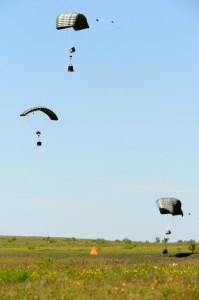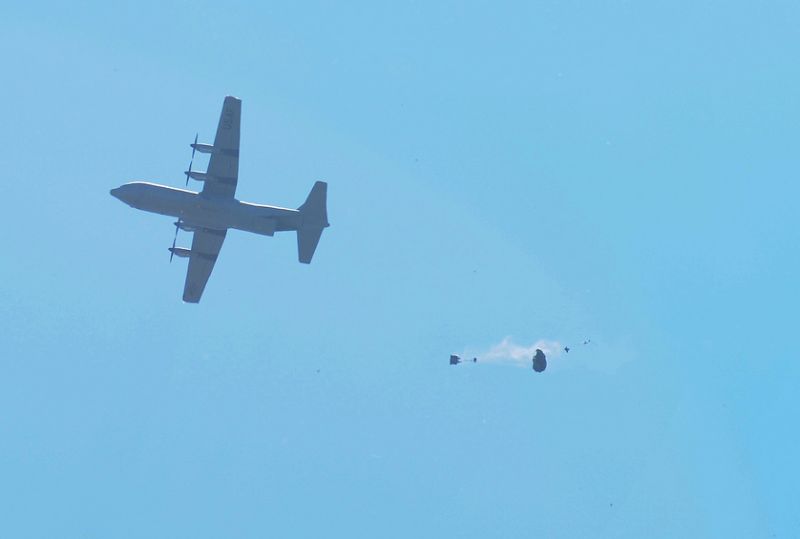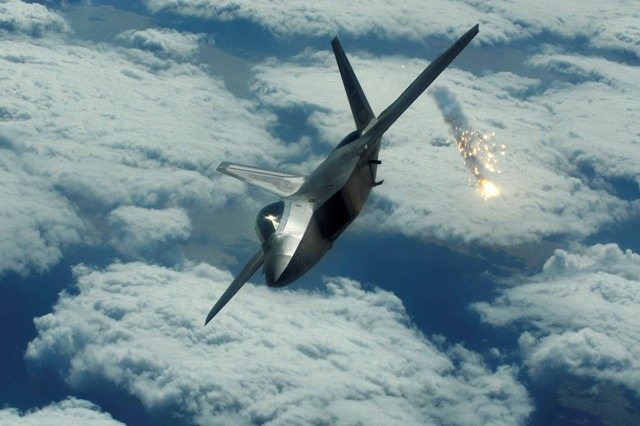The 317th Airlift Group successfully completed a precision airdrop capability demonstration to a distinguished panel of visitors at Fort Hood, Texas, during the U.S. Transportation Command Component Commander’s Conference on April 24.
The mission objective was to display combat aerial resupply by way of Joint Precision Airdrop System to several of the nation’s joint leaders.
“This event showcased the level of precision that aerial delivery has achieved through the joint efforts of the Army and Air Force,” said Maj. Justin Brumley, 317th Airlift Group. “This display highlighted the capability of delivering combat supplies or humanitarian aid from high altitude with precise results.”
JPADS is an airdrop system that uses the Global Positioning System, steerable parachutes and an on-board computer to steer loads to a designated point of impact on a drop zone, analogous to precision weapons.

“The capabilities of precision airdrops are an integral part of the logistics chain,” said Lt. Col. Kenneth Gjone, 317th Operations Support Squadron commander. “Often times, ensuring ground forces have the right supplies exactly when and where they need it can be just as important as putting a bomb on target.”
Air Mobility Command units were tasked to start JPADS training in the Continental U.S. at higher altitudes to replicate combat airdrops in Afghanistan. These precision airdrop capabilities were shown to component commanders during the conference.
Due to the amount of airspace needed to conduct high-altitude JPADS training, only a few select locations can facilitate this airdrop method, making the 317th AG the premier unit to conduct this training. Last month, the 317th AG was the first unit to drop JPADS above 10,000 feet on a routine training mission.
“The higher you go the more airspace you need, that’s why dropping from altitude on routine training lines is a genuine challenge here in the CONUS,” Gjone said. “It’s for that exact reason the 317th Airlift Group was chosen to showcase this airdrop capability.”
“Dropping from this altitude presents the aircrew with a myriad of additional challenges; especially the planning considerations to mitigate collateral damage concerns here in the CONUS should a bundle go haywire,” Gjone added. “It’s essential to train the way we fight.”
Most precision airdrops performed in combat are performed at high altitudes, meaning crews wear supplemental oxygen masks and helmets, as well as deal with the physiological effects of flying unpressurized at those heights.
“It all comes down to helping out the guys on the ground,” Gjone said. “When we’re downrange there are no second chances – we need to get it right the first time. One way we can increase the reliability of JPADS is by making sure our operators are proficient.”
Furthermore, the relationship between Dyess AFB and Fort Hood has added to the evolution of airdrop capabilities as well as a better understanding of each other’s needs.
“The best part about this precision airdrop capability demonstration was the opportunity to work with many players from the joint team that made it all happen,” he said. “Since (Headquarters) AMC tactics and staff called us in March, we’ve worked closely with them to make this mission happen. The Army National Guard, Air Mobility liaisons and hosts at Fort Hood were an integral part of this demonstration.
“Most of our efforts in air mobility, including precision airdrops, are in direct support of ground units,” Gjone said. “Having the opportunities to work together in training increases teamwork and mutual confidence between the Army, Air Force and all members of the joint team. Dyess C-130s couldn’t conduct JPADS training without the support of Fort Hood. By working together, we can all feel confident that when ground forces make the call, air mobility will deliver.”











